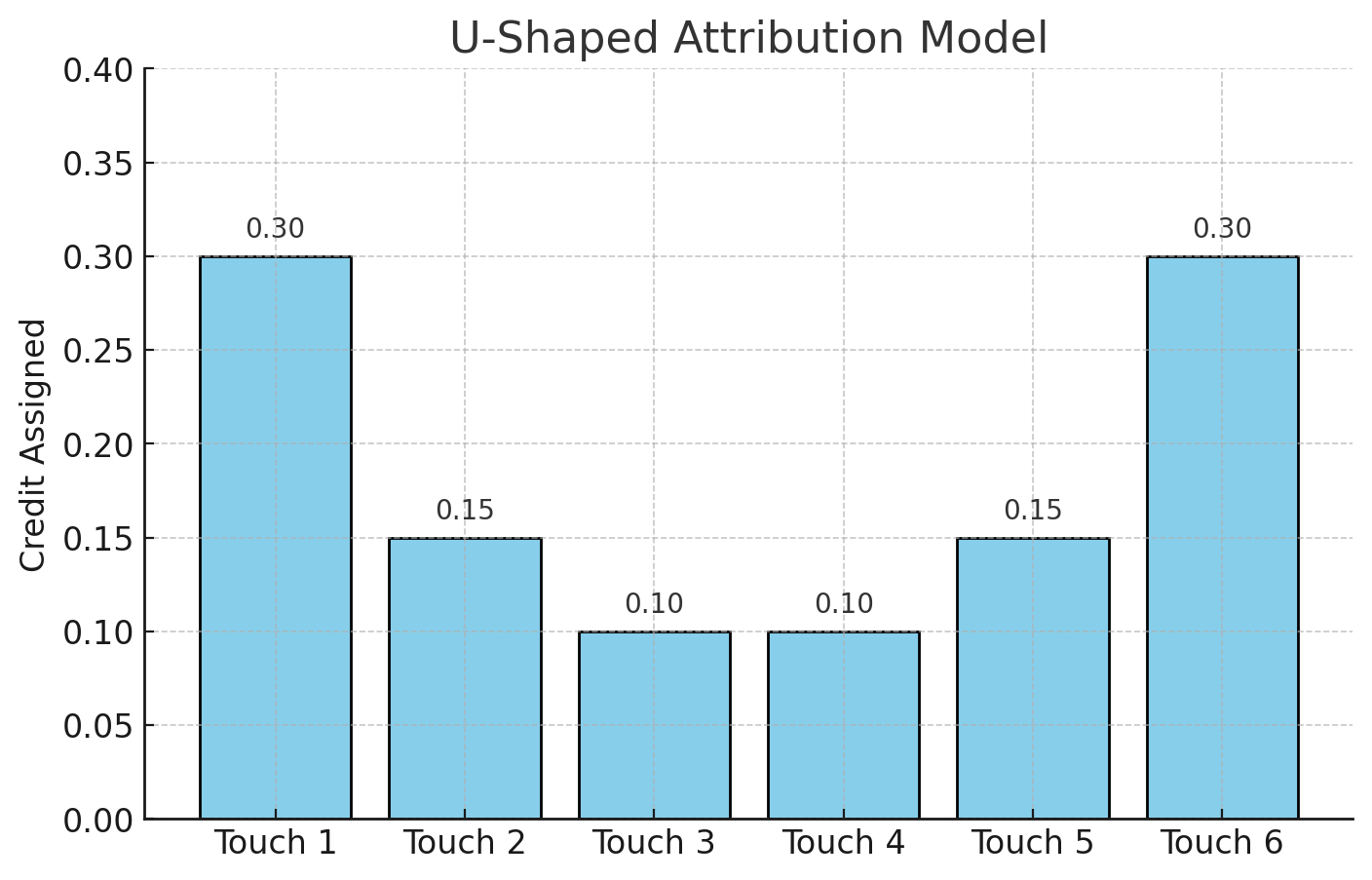Incrementality measures the true value each partner adds by showing which conversions would not have happened without that partner. This helps ensure you don’t cut partnerships that are actually driving incremental sales. Incrementality is used in the Incrementality Dashboard and the Incrementality by Partner Report.
The Incrementality Dashboard gives insights that can help to answer:
How much incremental value is each partner contributing?
If I removed a partner, how much revenue would I lose?
Am I underpaying or overpaying certain partners?
Incrementality % shows the share of a partner’s actions or revenue that drive real additional value.
High Incrementality % = Partner is driving real additional value (e.g., many solo, introduce, or close touches).
Formula: Total fractional credit from the model ÷ Total orders the partner participated in.
The calculation uses a U-Shaped Time Decay Attribution Model that gives credit to all touchpoints, not just the last click. The first and last interactions are considered most important, so they receive more weight than the middle ones.
The calculation's 7-day time decay model means interactions closer to the conversion get more credit. For example, an interaction 1 day before a conversion counts twice as much as one 8 days before. The first and last steps in the conversion path also receive extra weight.
This model ensures that partners who help start or close journeys, or who contribute close to the conversion, are weighted more heavily.

Adjusted CPA/ROAS account for incrementality by showing cost and returns only for incremental actions or revenue. These metrics help you set fair performance targets:
Adjusted CPA = lowest cost per action you could pay while still getting value.
Adjusted ROAS = highest return on ad spend you can expect from incremental value.
Under a last-click model, a partner may miss credit for contributions if another channel “leapfrogs” them. Incrementality reporting distributes credit more fairly, often showing that a partner drove more value than otherwise recognized.
Identify which partners are driving true incremental sales.
Compare standard vs. adjusted CPA/ROAS to see if you are under- or overpaying.
Use insights to decide whether to optimize, renegotiate, or expand a partnership.